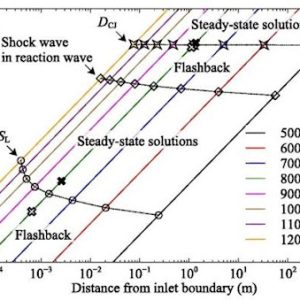-
Theory linking ignition with flame provides roadmap to better combustion engines
Date posted:
-
-
-
Post Author
Greg Kelsall
-
-

In a study published recently, researchers from Tohoku University in Japan theoretically linked ignition and deflagration in a combustion system, unlocking potential new configurations for stable, efficient combustion engines due to the possible existence of any number of steady-state solutions.
According to researchers at the University “This research directly tackles the challenge of reducing CO2 emissions by enhancing the efficiency of combustion engines, a significant source of these emissions. A better understanding of combustion dynamics will also support the development of safer, more sustainable engineering solutions.”
Combustion dynamics involves complex coupled fluid and chemical reactions. Researchers use computational fluid dynamics to help them better understand and control the process.
If a system that operates stably in a steady state and has a certain tolerance range for small perturbations can be utilised, it would simplify the structure and control of combustors, and increase the feasibility of commercialising new combustor designs.
To explore this concept, the Tohoku University researchers considered a simple, one-dimensional reactive flow system, where unburned premixed gas enters a combustion chamber from the left inlet boundary, while burned gas, or deflagration wave, exits from the right outlet boundary.
The working theory up to this point held that a steady-state solution exists only when the inlet velocity matches either the velocity of the deflagration wave (which travels at subsonic speeds) or the velocity of the detonation wave- a shock reaction where the exiting flames travel at supersonic speeds.
However, this conventional wisdom is predicated on the assumption that chemical reactions in the preheating zone are negligible. Recent studies emphasise the significance of ‘autoignition-assisted flames’, whereby a deflagration propagating in a hot unburned premixed gas mixture has a faster propagation speed with the help of chemical reactions in front of the flame. This suggests that there are any number of steady-state solutions, which affect the amount of residence time gas stays in front of the deflagration.
The outcomes of the simulations conducted under the conditions show that increasing the inlet temperature makes the formation of an autoignitive reaction wave more likely. Consequently, this leads to a greater range of steady-state solutions, not limited to just deflagration and detonation waves.
Building on these findings, the Tohoku University researchers designed a theory that successfully bridged the gap between ignition and deflagration waves, revealing the existence of additional steady-state solutions that are possible when they considered the autoignitive reaction wave—a wave that is affected by ignition in the preheat zone but behaves like a deflagration wave.
This means that steady-state solutions exist not merely at the two points where the inlet velocity matches the velocities of the deflagration or detonation waves, but also in a broader region if autoignitive conditions are considered.
By theoretically linking ignition and flame, the engine can now be considered from a new perspective. Accounting for ignition phenomena offers the possibility of more stable combustion, leading to the idea of a new concept of engine that is more efficient than the conventional one. According to the researchers, “this work on stabilising autoignitive reaction waves marks a fundamental breakthrough, potentially revolutionising the design of combustion systems, especially in the realm of supersonic combustion”.
While theoretical and numerical results have provided a new engine concept, it has not yet been experimentally verified. The team therefore plans to apply the research findings to an actual engine through further experimental verification.
